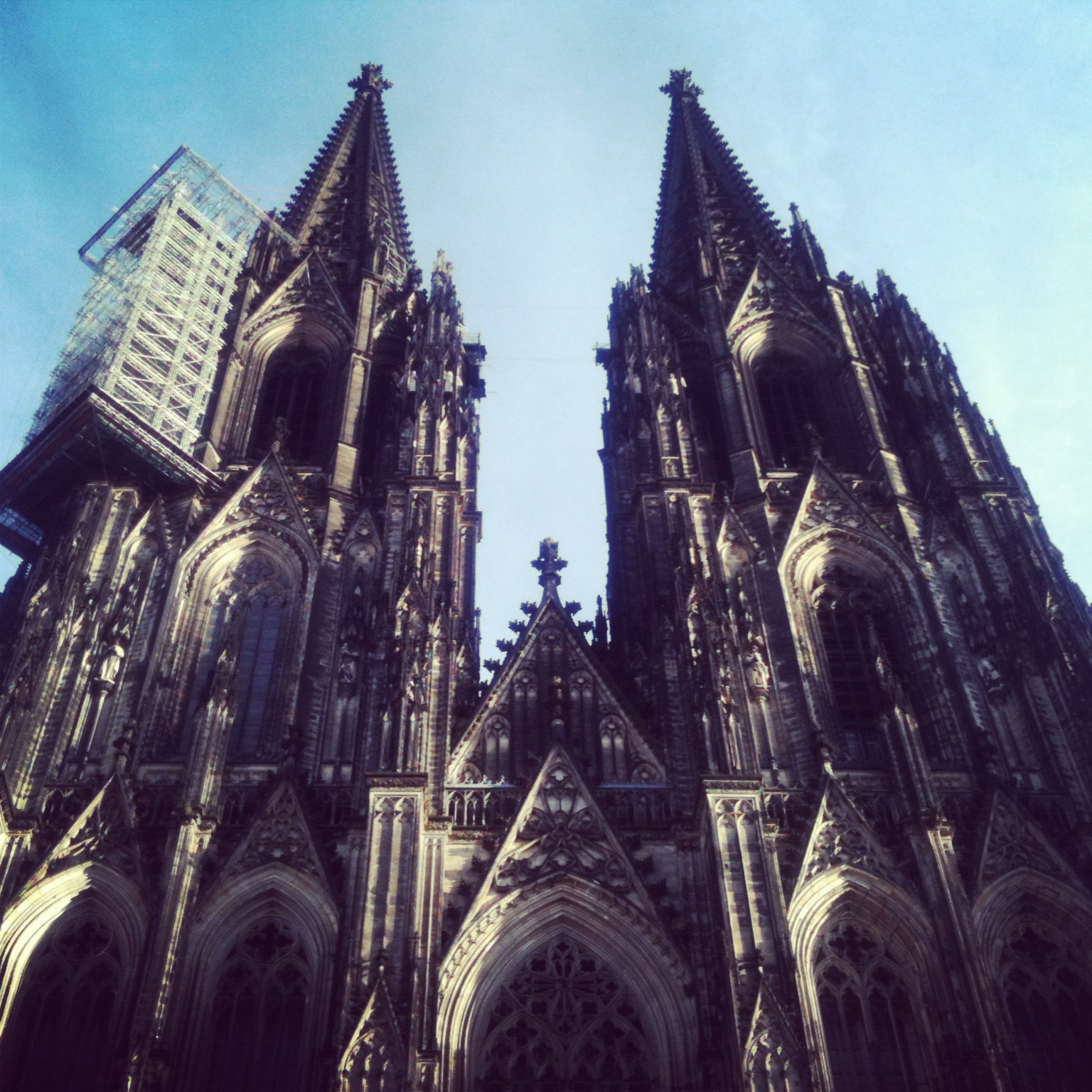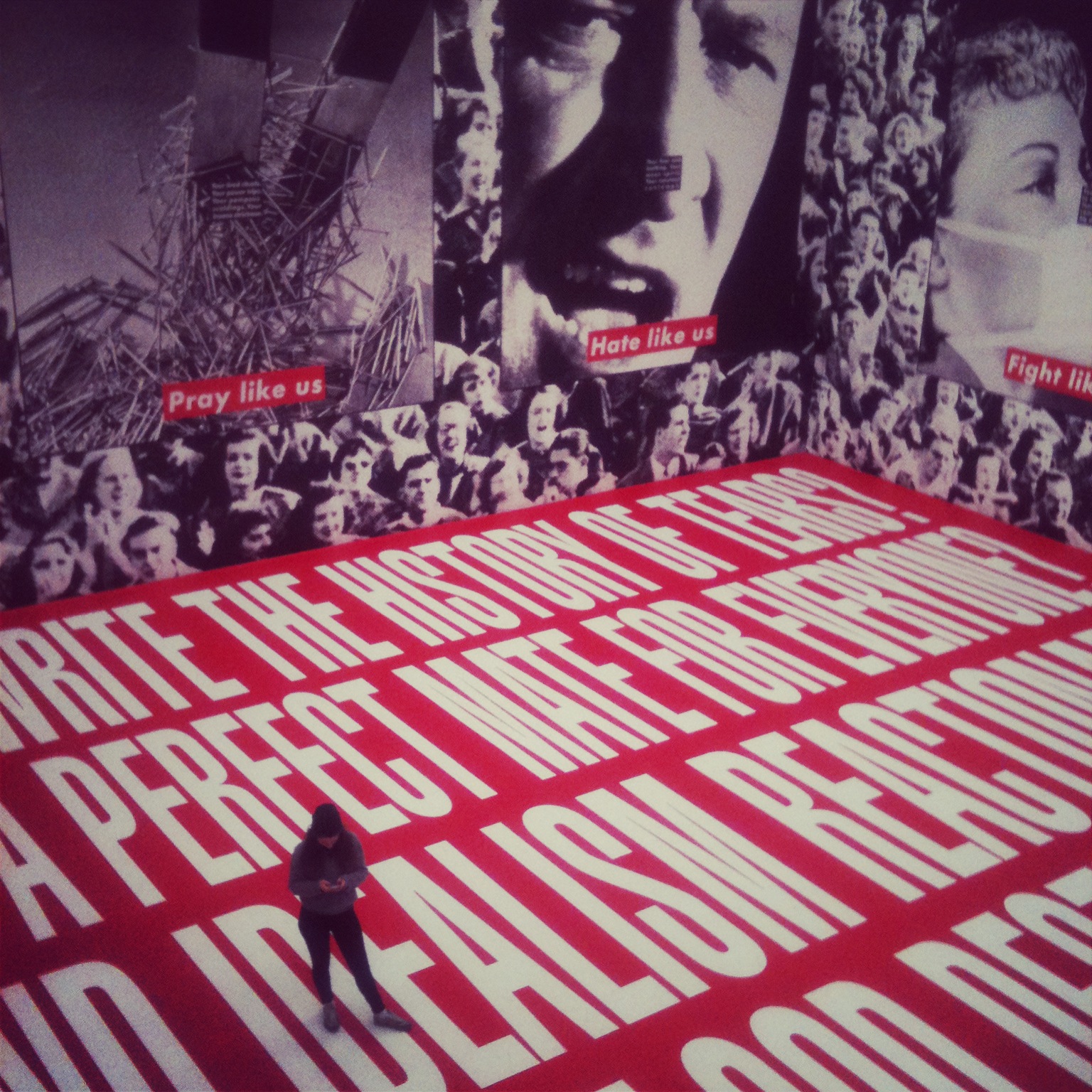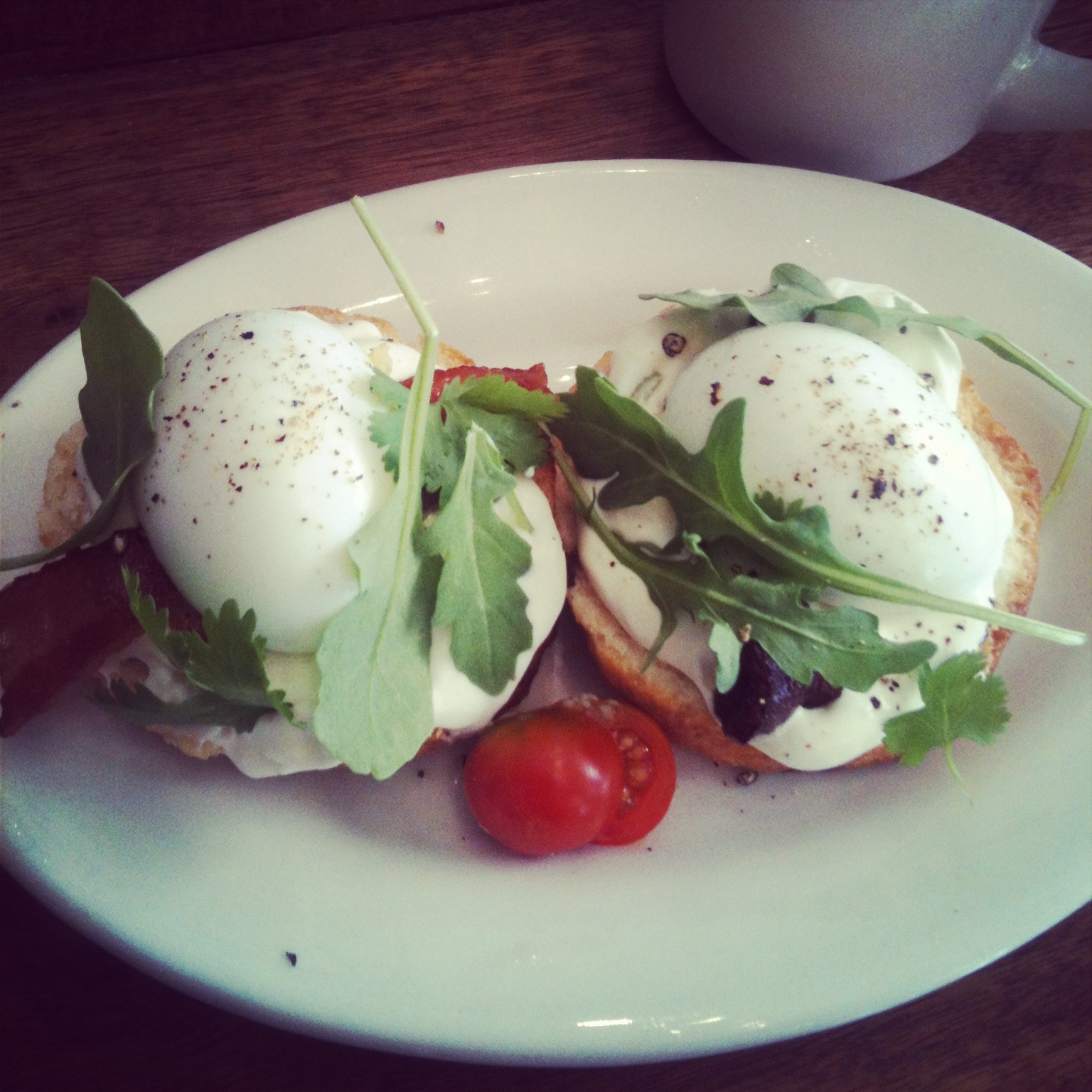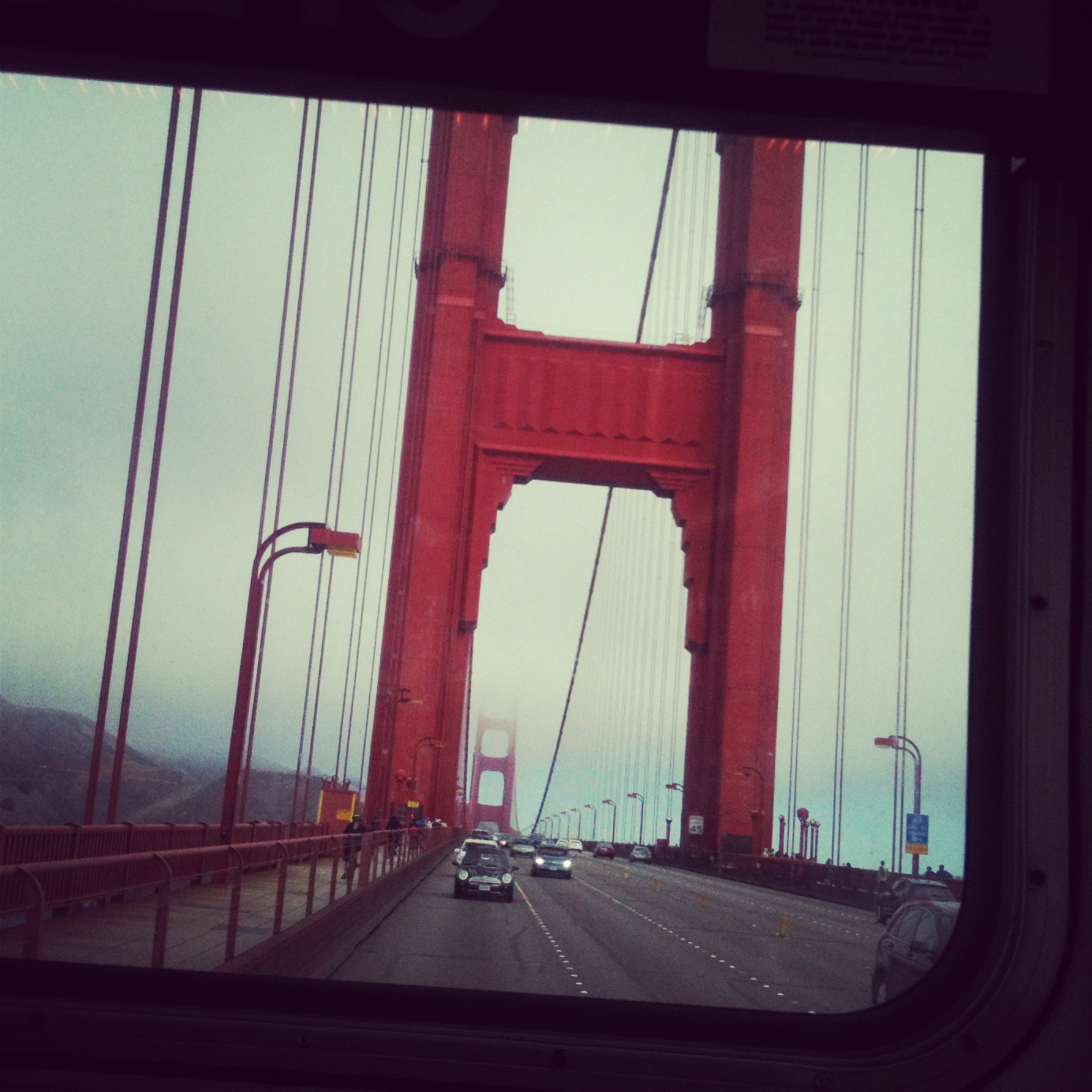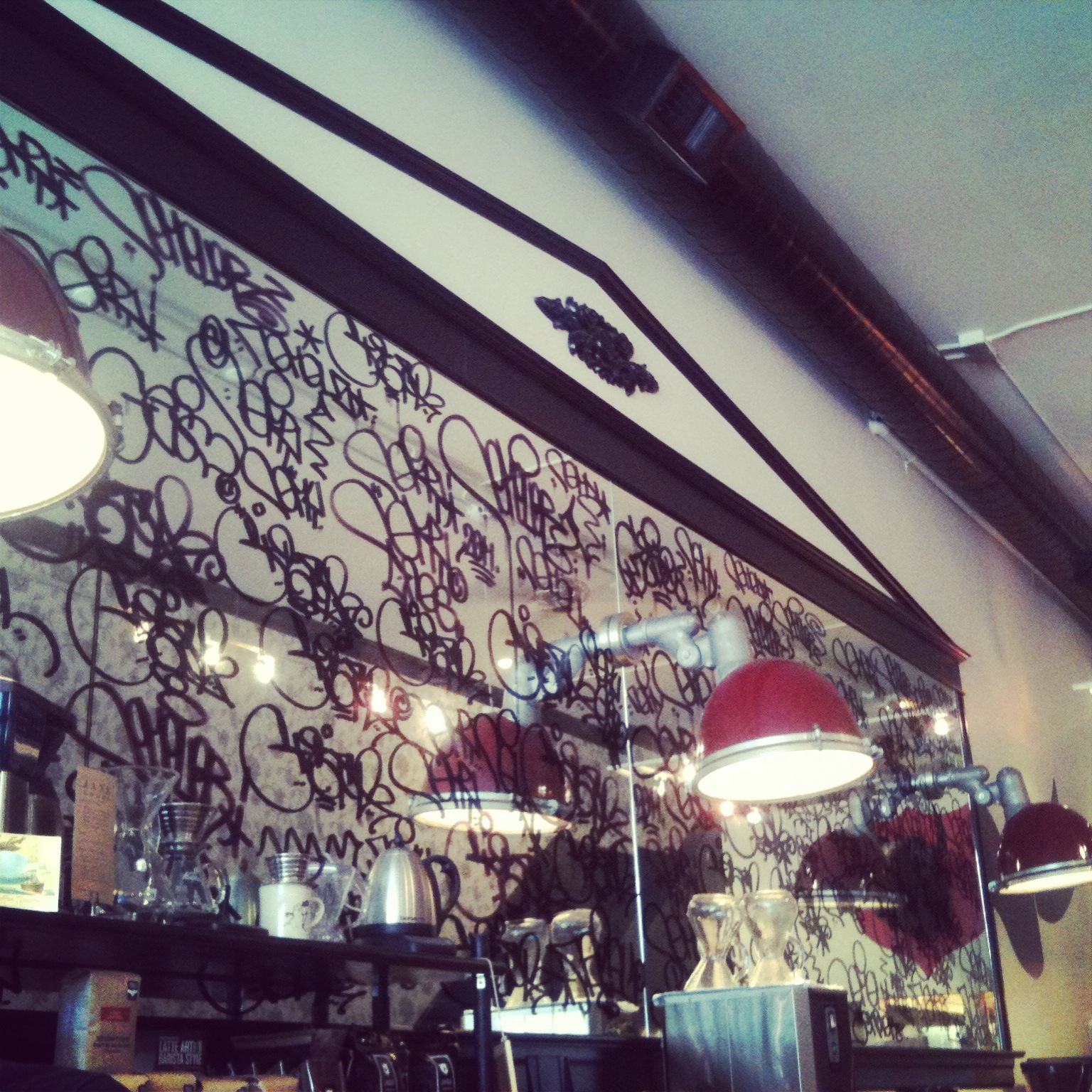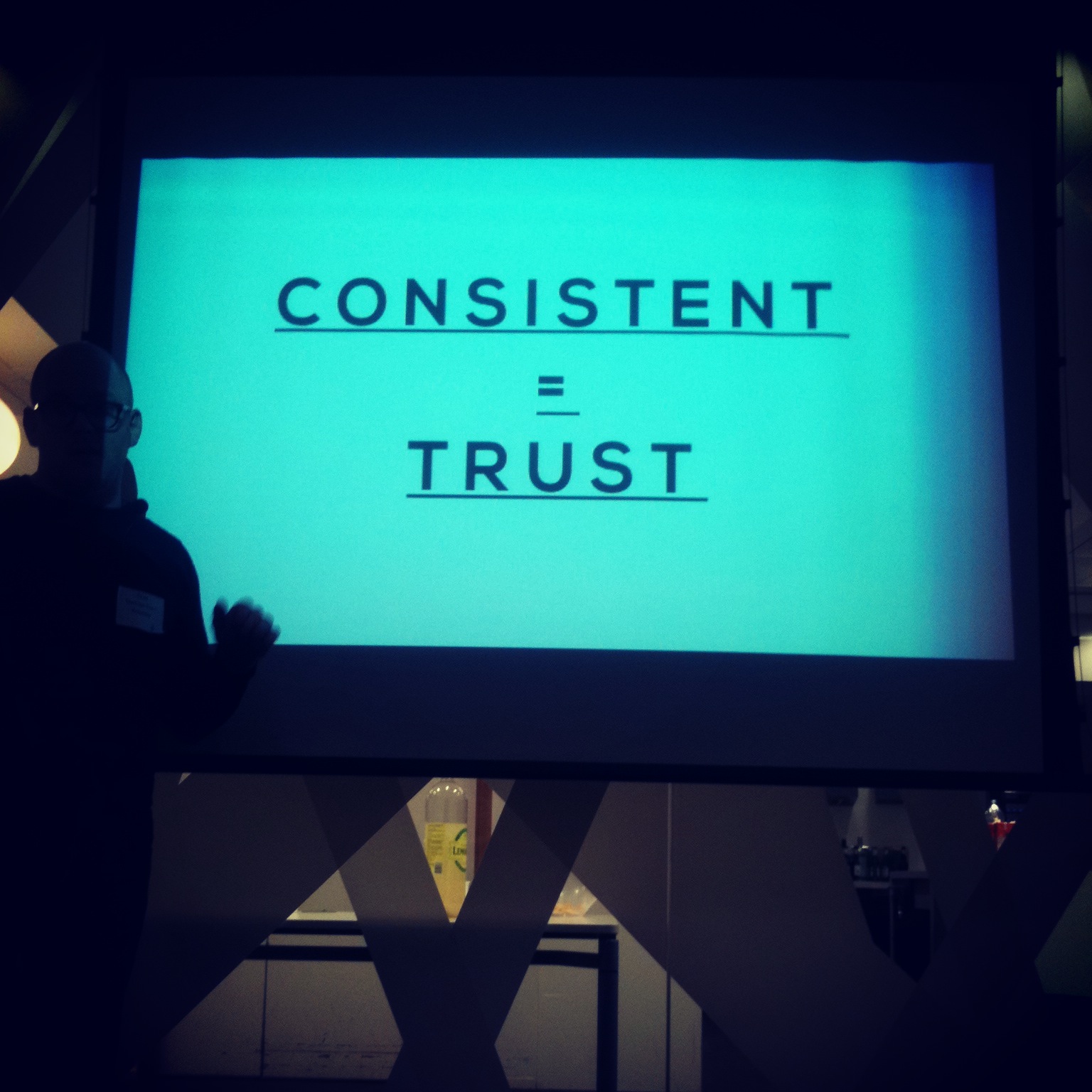 The February 2013 UXPA UK event was about the intersection of brand and experience design. Here is a short overview of the talks and a few thoughts on the subject.
The February 2013 UXPA UK event was about the intersection of brand and experience design. Here is a short overview of the talks and a few thoughts on the subject.
User experience is at the heart of your brand
Kevin Keohane (@brandviolet) and Don Fogarty (@DonFog) from Brand Pie gave a talk titled 'User experience is at the heart of your brand'. They began with some brand basics: be relevant (to the audience you want to engage with), be authentic (don't say one thing and do another) and be differentiated (why should people chose your product over a competitor's?). When working with clients they ask what's your purpose, ambition, strategy and positioning? These questions apply to both internal and external facets of the company and they believe that strong, enduring brands align what they do with what they say and position themselves based on what they're great at and not just on what's happening in the market.
They then explained why they think that brand experience and user experience need to be one and the same thing and referenced a study published in the Journal od Applied Psychology that gave poor treatment as the number one reason why people leave brands (a whopping 73%). Customers who have memorable experiences with your brand are more likely to remain loyal, spend more money with you and recommend your brand to their friends. Conversely customers who have bad experiences will also share these with people in their network on a variety of channels.
"Create an experience that provides a memory that relates directly to your brands purpose, ambition, strategy and positioning" – Kevin Keohane and Don Fogarty
As Kevin and Don explained the prize is to become market leader but even leader brands can be knocked off the top if a nimble challenger brand comes along with a simple, usable, focused product that is backed up with a superior end-to-end customer experience connected across all touch points.
Brand is Interface
David Eveleigh-Evans (@eveleighevans) from Method spoke about the ways in which the nature of brand definition is evolving and adapting and how interaction design is shaping the experiences between people, technology and brands. He explained that interaction design is becoming ever more important in differentiating a brand and maintaining customer loyalty as product experience surpasses traditional marketing communications and advertising.
David explained that your brand is more than a logo, a typeface and a series of colours, your brand is your interface and the gap between brand promise and brand reality is determined by the truth of use. Being consistent and transparent creates trust and brand loyalty.
"A brand is not a product or a promise or a feeling. It's the sum of all the experiences you have with a company" – David Eveleigh-Evans
Social networks provide brands with opportunities to join in the discussion on a much more personal level and they are also opening up new touch points for customer engagement and support (conversely they are also creating new outlets for your customers to talk about you). David explained that the challenge now for brands is to bridge the gap across all of these online and offline touch points.
Summary
Digital technology is bringing us closer to brands than ever before via mobile, desktop and offline channels. How can brands differentiate themselves in this ever-changing world?
Customer experience should be at the heart of everything you do. A user-centred design approach aligns business goals with the needs of customers across channels, devices and touch points. After all, customers who have a positive memorable experience are more likely to return. However, if you have a fantastic product but your online presence leaves your customers frustrated and unsatisfied then they may well start looking for alternatives.

